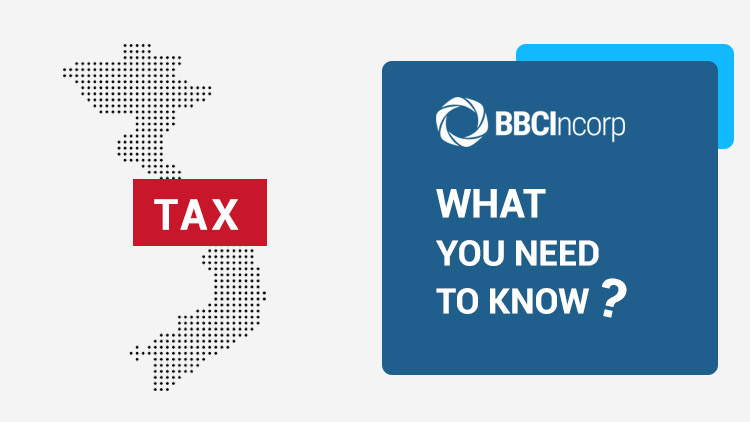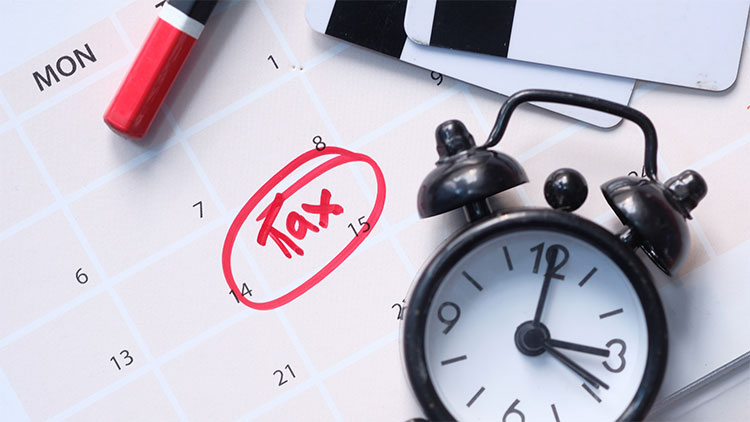
Value-added tax (VAT) is a tax imposed on goods and services at every stage of their production during which value is added, from initial production to distribution and consumption. The scope of Vietnam VAT is fairly large and it is likely that your company has to pay for it.
For a better understanding, let’s work through some crucial aspects, including what goods and services are taxable, how to calculate your VAT and other obligations you need to fulfill.
Introduction to Vietnam VAT
In Vietnam, all organizations and individuals that produce, trade, or provide goods and services are subject to VAT.

Furthermore, any company or person that imports goods or purchases services from overseas also needs to pay VAT.
Taxable Products
Generally, all types of goods and services used for production, trading, and consumption in Vietnam are subject to VAT, except for those that are defined as non-taxable products.
Non-taxable Products
Specifically, the following products are exempt from value-added tax in Vietnam:
- Products from cultivation and husbandry, aquatic products (not yet been processed) when sold directly by the producing organizations or when imported;
- Other products that relate to agriculture;
- Transfer of rights to use land;
- Insurance services;
- Financial or banking services or securities trading (stock/share);
- Healthcare services for humans and animals;
- Public transportation by bus and tramcar;
- Specific types of imported machinery, equipment, materials, or facilities that cannot yet be produced or manufactured in Vietnam;
- Transited goods in Vietnam; goods temporarily imported for later re-export or vice versa; raw materials imported for the production or processing of later-exported goods under contracts signed with foreign parties; goods and services traded between foreign countries and non-tariff areas or between non-tariff areas;
- Transfer of technology under the law of technology transfer; transfer of rights to own intellectual property under the law of intellectual property; computer software;
- Gold under the forms of bar and ingot;
- Goods and services of business households/individuals whose yearly revenue is no more than 100 million VND;
- Other types of products.
For a full, concise, and detailed breakdown of Vietnam Tax System, make sure you check out our article!
What are VAT rates in Vietnam?
In general, there are three VAT rates for different kinds of goods or services in Vietnam.

(1) 0% Rate
This rate applies to exported goods and services, international transportation, and non-taxable products upon exportation except for:
- Overseas transfer of technology or rights to own intellectual property;
- Overseas reinsurance service;
- Credit provision service;
- Transfer of capital;
- Derivative financial service;
- Telecommunication service;
- Unprocessed mined resources and minerals or any product in which the market value sum of mined resources, minerals and energy cost accounts for 51% or more.
(2) 5% Rate
The following goods and services are subject to the VAT rate of 5%:
- Clean water for production process or domestic use;
- Medical equipment and tools; medical cotton and bandage; preventive and curative medicines; pharmaco-chemistry products and pharmaceuticals used for the production of curative and preventive medicines;
- Teaching and learning aids;
- Exhibition, cultural, physical, and sports activities; art performances; film production; import, distribution, and screening films;
- Toys for children and certain kinds of books;
- Scientific and technological services under the law of science and technology;
- Sales and lease of social housing;
- Various goods and services that relate to agriculture, aquaculture, cultivation, and forestry.
(3) 10% Rate
Other than products that are subject to the VAT rates of 0% and 5%, all other types of goods and services are imposed on a 10% rate. For the period from 1 February to 31 December 2022, Decree 15/2022 grants a 2% VAT deduction for goods and services that are currently imposed 10% VAT (with some exceptions).
Apart from VAT tax rate, you might also want to consider the corporate tax rate for your business in Vietnam. Simply take a look at our Guide to Corporate Tax in Vietnam for more actionable insight!
Two Methods to Calculate VAT in Vietnam
In fact, there are two methods for VAT calculation in Vietnam, which are the credit method and the direct method.

Credit Method
This method applies to business entities that fully comply with regulations on accounting, invoices, and documents.
Particularly, you can use this method if your business entities:
- Have yearly revenue reaching 1 billion VND or above from trading goods or providing services, excluding business households or individuals;
- Register voluntarily for the credit method, excluding business households or individuals.
Once you select this method, you must maintain it for 2 consecutive years.
In brief, you can calculate your payable VAT amount as follows:
[Payable VAT amount = Output VAT – Creditable Input VAT]
Glossary
- Output VAT is the total amount of value-added tax on sold goods and services indicated in the added-value invoice (or red invoice in Vietnam).
- Creditable Input VAT is the total amount of value-added tax on purchased goods and services indicated in the added-value invoice or the total amount of value-added tax on imported goods indicated in the added-value document.
Some notes on the issue of crediting input VAT include:
- The amount of input VAT on purchased goods and services can be wholly credited.
- If the input VAT is imposed on goods and services used for the production of both taxable and non-taxable products, only the proportion used for taxable products is creditable. Business entities are responsible for the task of calculating this proportion.
- An amount of input VAT on goods and services sold for humanitarian aid purposes or used for petroleum exploration can be wholly credited.
In order to credit input VAT, your business entities must have:
- VAT invoices of purchased goods and services or VAT payment documents of imported goods.
- A non-cash payment document of purchased goods or services valued at 20 million VND or more.
- Contracts signed with foreign parties, invoices, non-cash payment documents, and customs declarations for exported goods and services.
Below are some notes on invoices in Vietnam:
- VAT invoice is called red invoice in Vietnam.
- According to Circular 68/2019/TT-BTC, all businesses must issue electronic invoices (with or without tax verification) when selling goods or services to buyers. Businesses register e-invoicing with the General Department of Taxation. Electronic invoicing will become mandatory from the beginning of November 2020.
Direct Method
Overall, you need to apply the direct method if you fall under a specific category.

In summary, these categories include:
- Enterprises and co-operatives that have yearly revenue less than 1 billion VND or do not voluntarily register for credit method;
- Business households and individuals;
- Foreign organizations and individuals that do not have a permanent establishment in Vietnam but have income arising within this nation and have not fully complied with regulations on accounting, invoice, and document (except those engaging in exploring and exploiting oil or gas);
- Enterprises engaging in trading in gold, silver, and precious stones;
- Other economic organizations.
Following the direct method, you can calculate your payable VAT amount as follows:
[Payable VAT amount = Revenue x Regulated rate (%)]
The regulated rate (%) varies in different sectors, which specifically include:
- Distribution and provision of goods: 1%
- Services and construction without material provision: 5%
- Manufacture, transportation, services with attached goods, construction with material provision: 3%
- Others: 2%
Please do note that the above formula does not apply to trading or producing golds, slivers, and precious stones.
Instead, you can use the following formula:
[Payable amount = Bid-ask Spread x Regulated VAT rate for these products]
If you’re running a company in a foreign jurisdiction but provide goods and services in Vietnam, your company might be subject to Vietnam Foreign Contractor Tax.
Take your time and read our full guideline on Vietnam Foreign Contractor Tax: What Is It and How to Pay?
Vietnam VAT Declaration
Generally, if your business producing or trading taxable products in Vietnam, you must register for VAT and declare VAT on a monthly basis or quarterly basis.

To begin with, you’ll need to file VAT returns on a monthly basis, within 20 days after a month ends
Meanwhile, on a quarterly basis, you need to file VAT returns within 30 days after a quarter-end.
Essentially, according to Section 15 of Resolution No.151/2014/TT-BTC on tax amendment, if you have revenue from the previous year no more than 50 billion VND, you must adopt a quarterly declaration.
Most importantly, if you’ve just started your business (e.g. first-year business), you must declare VAT quarterly.
After that, you can change to a monthly declaration or continue with the quarterly declaration, depending on the revenue earned in that first year.
On the other hand, there are some types of products that do not need declaration.
For example, certain kinds of compensation, services rendered by foreign organizations that do not have permanent establishments in Vietnam, or others regulated by law.
As a foreigner working in Vietnam, it is likely that you have to declare your personal income tax. If you’re still new to this term, make sure to check our guideline on Personal Income Tax declaration and payment in Vietnam.
VAT Refund in Vietnam
There are some circumstances in which a business entity can get a refund of VAT.

Summarily, you can get a refund of VAT if falling into the following scope:
Your business entity adopting the credit method with:
- A new investment project and the project is in the investment phase;
- The remaining amount of input VAT that has not been fully credited, valued at 300 million VND or more.
Furthermore, if your business entity exports goods or services in a month or quarter and has a remaining input VAT amount that has not yet been fully credited valued at 300 million VND or more, your business entity is entitled to VAT refund for that month or quarter, except for the following circumstances:
- Your imported goods are for re-export purposes;
- The goods do not go through an exporting process within customs-controlled areas under the Customs Law.
Lastly, your business entity:
- applies the credit method, and upon ownership transformation, enterprise transformation, merger, consolidation, separation, split, dissolution, bankruptcy, or operation termination, it has overpaid VAT or has some input VAT amount not yet fully credited.
- is in charge of certain ODA projects.
- receives exemptions from certain government agencies according to related laws.
If your business entity applies the credit method and has a remaining input VAT amount larger than output VAT, you can carry forward the remaining input amount to offset against output VAT in the following month or quarter.
Final thoughts
At this point, you’ve obtained basic understanding of VAT in Vietnam, as well as how to calculate VAT for your business.
We’ve summarized some key points below, so you can always keep track of your tax payments and compliance.
Key takeaways
- Generally, most types of goods and services used for production, trading, and consumption in Vietnam are VAT taxable, except for those that are defined as non-taxable products.
- There are three value added tax rates in Vietnam: 0%, 5%, and 10% (10% is the standard rate. Note that 8% rate is applying as updated by Decree 15/2022 to December 2022)
- You can calculate your payable VAT with 2 methods: credit method and direct method.
- As a taxpayer, you must declare VAT on a monthly/quarterly basis. Specifically, the deadline is within 20/30 days after the end of a month/quarter.
- In most cases, when your input VAT is larger than the output VAT, your business entity can carry forward the remaining input VAT amount that has not yet been credited to offset against future output VAT.
- VAT refund is available for some circumstances.
If you still have any questions that relate to Vietnam VAT, don’t hesitate to drop us a message, or get in touch with one of our friendly consultants for practical advice!
Disclaimer: While BBCIncorp strives to make the information on this website as timely and accurate as possible, the information itself is for reference purposes only. You should not substitute the information provided in this article for competent legal advice. Feel free to contact BBCIncorp’s customer services for advice on your specific cases.
Get helpful tips and info from our newsletter!
Stay in the know and be empowered with our strategic how-tos, resources, and guidelines.


